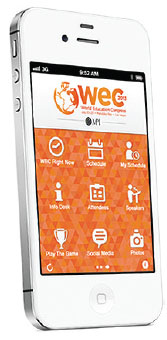
TRG has seen many businesses making great efforts to reduce their carbon footprint and review all aspects of their processes to find ways to be greener. As part of the meetings industry we are following suit in the areas of food and beverage, going paperless, travel and A/V to name a few.
Food and Beverage

For years we have all picked menus based on what sounded the most appetizing and fit into the budget requirements. But now meeting planners are trying to be more eco-friendly.
Foods that are local to the area and in season not only taste better and fresher, but they are also much “greener.” Locally sourced foods do not require long distance trucking and also helps to support local growers. Selecting items that are currently in season means fewer chemicals.
Food waste is another concern for hotels and planners. Getting accurate attendee counts and managing orders is the first step, but hotels and caterers must plan for some overage so as not to come up short at mealtime. Many hotels and caterers have started working with local food banks to donate excess food. This helps the local community and prevents waste.
Beverage selections and water service have also changed. Rather than putting out bottled water for attendees, many hotels are providing filtered water at water stations. Meeting planners are providing attendees with re-usable water bottles that can be filled at the water stations. Additionally many hotels make it easy to recycle cans and bottles at recycle containers throughout the hotel.
Paperless Meetings
Not too long ago meeting attendees would come away with enormous quantities of paper. From hard copies of speaker presentations, to meeting agendas and flyers from trade shows. This is no longer the case. Meeting websites, mobile apps and social media have dramatically changed how information is delivered to attendees.

From the beginning, planners are able to use their website to promote the event, allow online registration and full meeting schedules and agendas so attendees can preview sessions and register for specific sessions.
Once onsite, mobile apps allows attendees to set a specific schedule for themselves, link to their calendars and review speaker materials. Mobile apps provide greater flexibility for last minute schedule changes, or any other information to send to attendees. Mobile apps are also being used onsite for attendees’ activities and team building games.
Travel
This has been one of the biggest challenges for meeting planners when it comes to green standards. Meetings require travel of some sort, but companies are looking at ways to reduce some of the travel, by going to locations that are more central to the majority of attendees and finding local vendors for certain aspects of the meeting. Companies are also looking at purchasing renewable energy credits to reduce their overall carbon footprint.
Audio Visual
A/V is that latest segment of the industry to go green. TRG is following these changes closely. Standards are being developed by industry associations such as InfoComm and are being adopted by many companies. Audio visual equipment can use a lot of power so looking at ways to reduce power usage is key. Newer projectors are beginning to switch to LED lights, which use considerably less energy and the bulbs last significantly longer than traditional bulbs. Over the next few years we expect to see more significant changes in other audio and video equipment that will continue to reduce power consumption.

As meeting planners, we at TRG are always looking at every possible way to reduce consumption at meetings and become more eco-friendly. This is a trend we will continue to track and share with you.